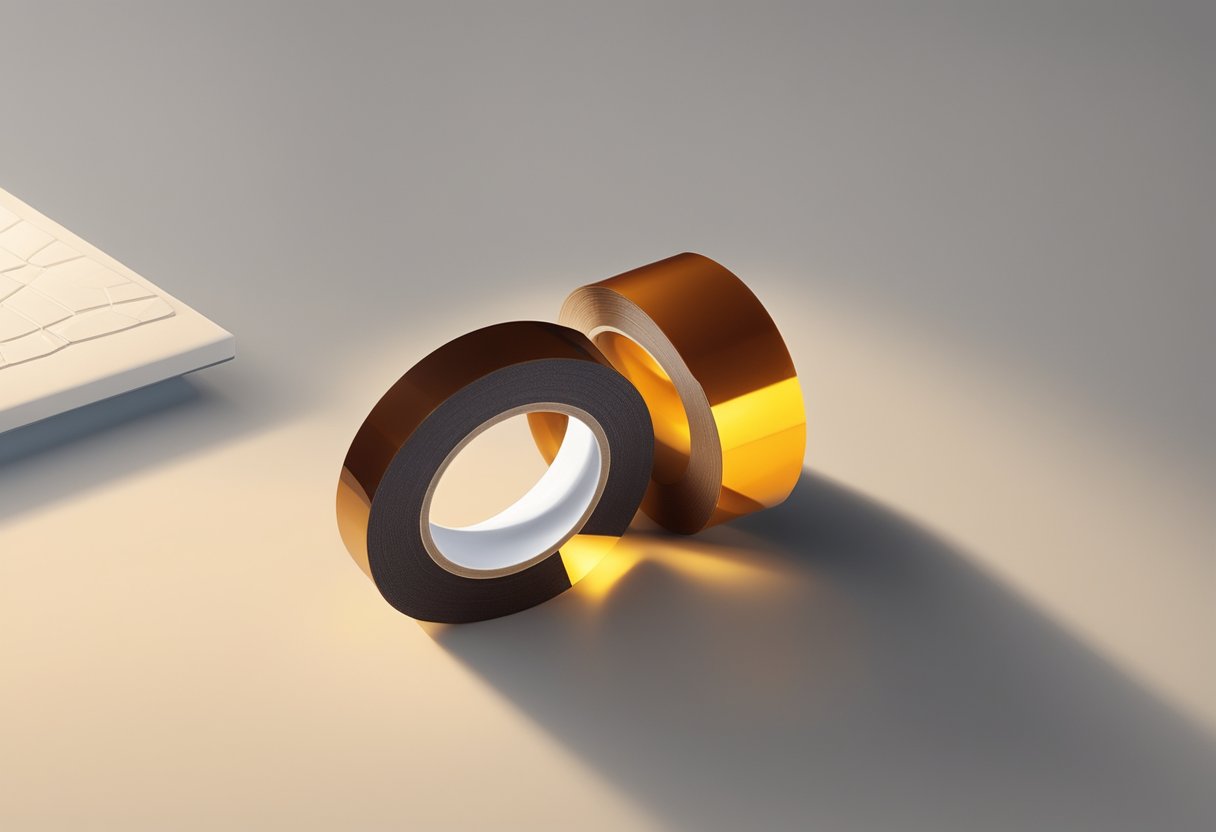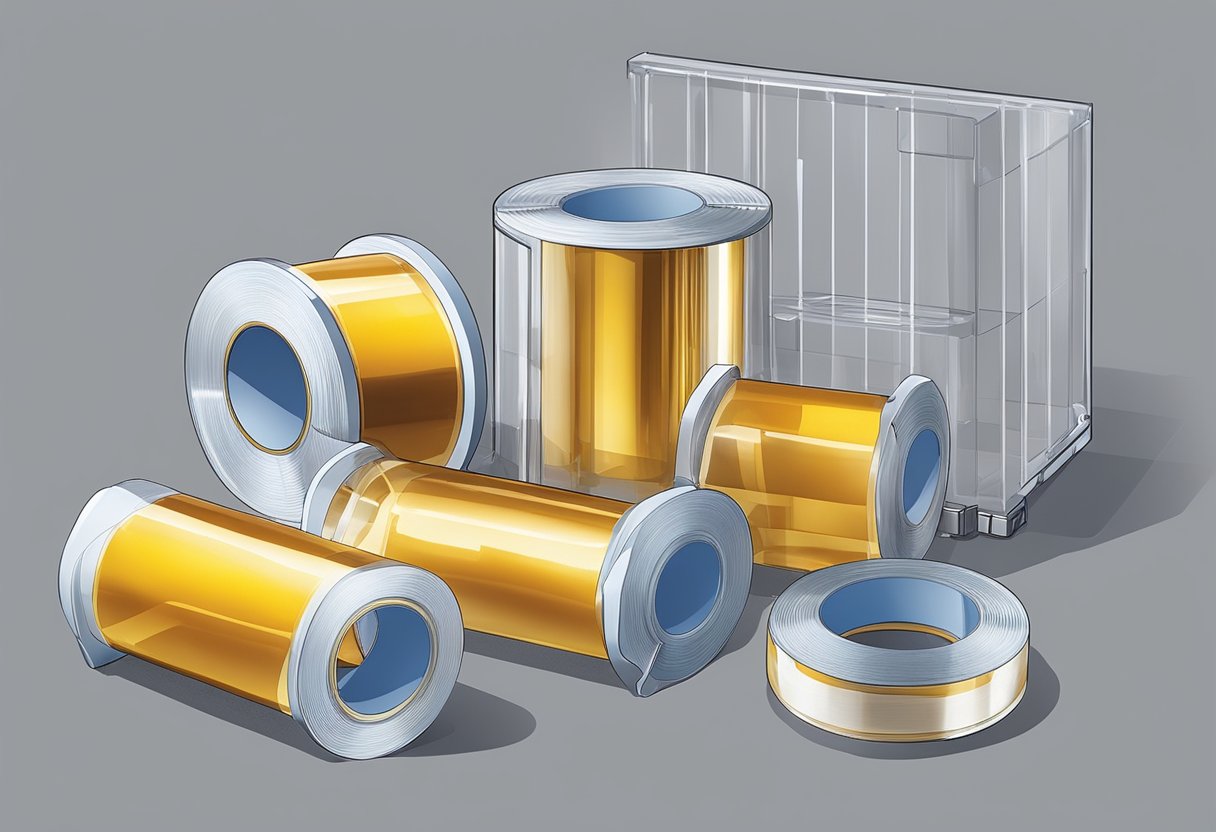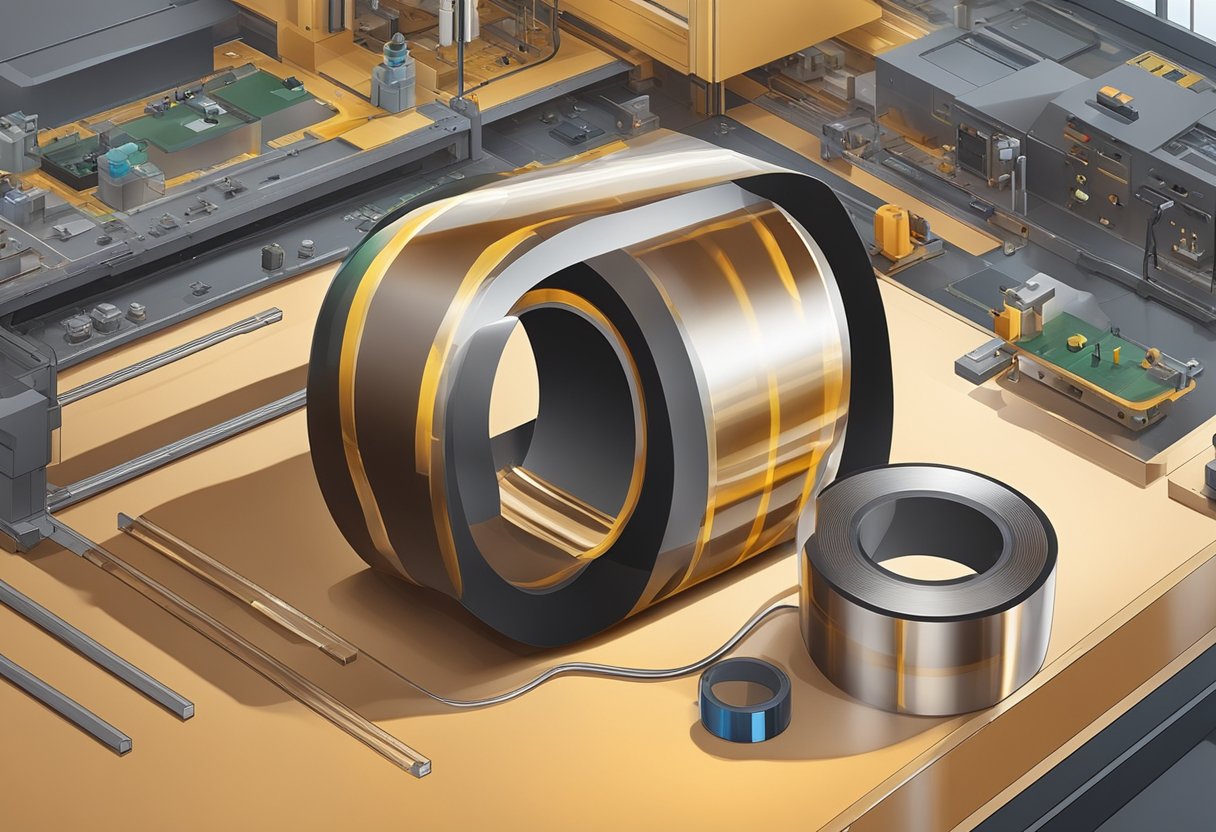No Residue Kapton Tape: A Clean Solution for Electronics Manufacturing
Kapton tape is a popular choice for a wide range of applications in various industries. It is a heat-resistant polyimide film that can withstand high temperatures, making it ideal for use in electronic devices, aerospace, and automotive industries. However, traditional Kapton tape leaves a residue on surfaces, which can be difficult to remove and can cause problems in some applications.

To address this issue, manufacturers have developed “no residue Kapton tape.” This type of tape provides all the benefits of traditional Kapton tape but without the residue. It is a clean, reliable solution that is easy to use and ideal for applications where residue is not acceptable. No residue Kapton tape is available in various sizes, thicknesses, and colors to suit different applications and requirements.
In this article, we will explore the benefits and applications of no residue Kapton tape. We will also discuss how it works, its properties, and why it is a better choice than traditional Kapton tape in some applications. Whether you are an engineer, technician, or hobbyist, understanding the advantages of no residue Kapton tape can help you make informed decisions when selecting materials for your projects.
What Is No Residue Kapton Tape

No residue kapton tape is a type of adhesive tape that is commonly used in various industries such as electronics, aerospace, and automotive. It is made from a high-temperature polyimide film that is coated with a silicone adhesive. This type of tape is known for its ability to withstand high temperatures, up to 500°F (260°C), and is resistant to chemicals, solvents, and radiation.
The main benefit of no residue kapton cloth tape is that it leaves no residue or adhesive behind when removed. This is particularly important in industries where cleanliness is crucial, such as in the manufacturing of electronic components. The tape can be easily removed without leaving any residue, which helps to ensure that the components remain clean and free from any contamination.
No residue kapton tape is also known for its high dielectric strength, which makes it an ideal choice for applications where electrical insulation is required. It can be used to wrap and protect wires, cables, and other electronic components, providing a reliable and effective barrier against electrical currents.
Overall, no residue kapton tape is a versatile and reliable adhesive tape that is widely used in various industries. Its ability to withstand high temperatures, resist chemicals and radiation, and leave no residue makes it an ideal choice for many applications.
Applications of No Residue Kapton Tape

Electronics Manufacturing
No residue Kapton tape is widely used in electronics manufacturing due to its excellent electrical insulation properties. It is commonly used to secure and insulate delicate electronic components during assembly and testing processes. The tape’s high-temperature resistance also makes it ideal for use in high-temperature environments, such as in the production of printed circuit boards and semiconductors.
In addition, the tape’s ability to leave no residue after removal makes it a popular choice for masking and protecting electronic components during soldering and conformal coating processes. This helps to ensure that the components are not damaged during these processes and that they function properly once they are integrated into the final product.
Automotive Industry
No residue Kapton tape is also widely used in the automotive industry. It is commonly used to protect sensitive electronic components, such as wiring harnesses and sensors, from heat and abrasion. The tape’s ability to withstand high temperatures and its excellent electrical insulation properties make it ideal for use in the engine compartment and other high-temperature areas of the vehicle.
In addition, the tape’s ability to leave no residue after removal makes it a popular choice for masking and protecting painted surfaces during the painting and finishing processes. This helps to ensure that the finished product has a high-quality, professional look.
Aerospace Engineering
No residue Kapton tape is also widely used in the aerospace industry. It is commonly used to secure and insulate electronic components in spacecraft and satellites. The tape’s high-temperature resistance and excellent electrical insulation properties make it ideal for use in the extreme conditions of space.
In addition, the tape’s ability to leave no residue after removal makes it a popular choice for masking and protecting sensitive surfaces during the manufacturing and assembly processes. This helps to ensure that the components are not damaged during these processes and that they function properly once they are integrated into the final product.
Benefits of Using No Residue Kapton Tape

No residue Kapton tape is a popular choice in various industries due to its unique properties. It is a high-temperature tape that can withstand extreme temperatures without leaving any residue behind. Here are some of the benefits of using no residue Kapton tape:
Heat Resistance
No residue Kapton tape can withstand high temperatures up to 500°F (260°C) without leaving any residue behind. This makes it an ideal choice for applications that require high-temperature resistance, such as soldering, circuit board protection, and electrical insulation.
Chemical Stability
No residue Kapton tape is resistant to various chemicals and solvents, making it a reliable choice for applications that involve exposure to chemicals. It is also resistant to UV light, which makes it an ideal choice for outdoor applications.
Ease of Removal
No residue Kapton tape is easy to remove without leaving any residue behind. This makes it a convenient choice for applications that require frequent tape removal, such as masking and painting.
In summary, no residue Kapton tape is a reliable and versatile tape that offers heat resistance, chemical stability, and ease of removal. Its unique properties make it an ideal choice for various applications in different industries.
Types of No Residue Kapton Tape
No residue Kapton tape is a type of high-temperature tape that leaves no adhesive residue when removed. This type of tape is commonly used in electronics manufacturing, automotive, aerospace, and other industries where high-temperature applications are involved. There are two main types of no residue Kapton tape: silicone adhesive Kapton tape and acrylic adhesive Kapton tape.
Silicone Adhesive Kapton Tape
Silicone adhesive Kapton tape is made of a polyimide film coated with a silicone adhesive. This type of tape is resistant to high temperatures, chemicals, and solvents. It is also known for its excellent electrical insulation properties, making it ideal for use in electrical applications. Silicone adhesive Kapton tape is commonly used in the electronics industry for masking during wave soldering, hot air leveling, and other high-temperature processes. It is also used in the aerospace industry for wire harness wrapping and thermal barrier protection.
Acrylic Adhesive Kapton Tape
Acrylic adhesive Kapton tape is made of a polyimide film coated with an acrylic adhesive. This type of tape is also resistant to high temperatures, chemicals, and solvents. It is known for its high adhesion strength and is commonly used in the automotive industry for high-temperature masking during painting and powder coating processes. Acrylic adhesive Kapton tape is also used in the aerospace industry for thermal barrier protection and wire harness wrapping.
Overall, both silicone adhesive Kapton tape and acrylic adhesive Kapton tape have their own unique properties and are suitable for different applications. Choosing the right type of no residue Kapton tape will depend on the specific requirements of the application.
Comparison with Other Adhesive Tapes
Polyimide vs. Polyester
Polyimide and polyester tapes are both commonly used in industries that require high-temperature resistance and electrical insulation. However, there are some differences between the two types of tapes.
Polyimide tape, also known as Kapton tape, is made of a polyimide film with a silicone adhesive. It has excellent thermal stability and can withstand temperatures up to 260°C (500°F) without leaving any residue. It is also resistant to chemicals and radiation, making it suitable for use in harsh environments.
On the other hand, polyester tape is made of a polyester film with an acrylic adhesive. While it is also heat-resistant, it can only withstand temperatures up to 150°C (302°F) without leaving residue. It is also less resistant to chemicals and radiation than polyimide tape.
Silicone vs. Acrylic Adhesives
Both silicone and acrylic adhesives are commonly used in adhesive tapes. Each type of adhesive has its own strengths and weaknesses.
Silicone adhesive is known for its high-temperature resistance and ability to adhere well to a variety of surfaces, including low surface energy materials. It also has good chemical resistance and is non-toxic. However, it may not be as strong as acrylic adhesive and may not adhere well to some surfaces.
Acrylic adhesive, on the other hand, is known for its strength and durability. It can withstand exposure to UV light, moisture, and chemicals without breaking down. It also adheres well to a variety of surfaces and is available in a range of strengths and viscosities. However, it may not perform as well at high temperatures as silicone adhesive.
In conclusion, while there are many different types of adhesive tapes available, polyimide tape with a silicone adhesive is a top choice for applications that require high-temperature resistance and electrical insulation without leaving any residue. However, it is important to consider the specific needs of each application and choose the appropriate tape accordingly.
Installation Guidelines for No Residue Kapton Tape
No residue Kapton tape is a versatile and reliable adhesive tape that can be used in a variety of applications. When installing no residue Kapton tape, it is important to follow a few guidelines to ensure proper adhesion and performance.
First, clean the surface thoroughly before applying the tape. Any dust, dirt, or debris can impact the tape’s ability to adhere properly. Use a clean, dry cloth to wipe down the surface and remove any contaminants.
Next, cut the tape to the desired length and shape. No residue Kapton tape can be easily cut with scissors or a knife. Be sure to leave a small amount of excess tape on each end to ensure a secure hold.
When applying the tape, press firmly to ensure proper adhesion. Use a roller or your fingers to firmly press the tape onto the surface. For best results, apply the tape in a smooth, continuous motion.
If removing the tape, be sure to do so slowly and carefully. No residue Kapton tape is designed to leave no residue behind, but pulling the tape off too quickly can cause damage to the surface.
By following these simple guidelines, you can ensure that your no residue Kapton tape is installed properly and will provide reliable performance for your application.
Common Issues and Troubleshooting
Adhesive Transfer
One common issue when using Kapton tape is adhesive transfer. This occurs when the adhesive from the tape remains on the surface after removal. Adhesive transfer can occur when the tape is left on the surface for too long or when the temperature is too high during application.
To avoid adhesive transfer, it is important to use the correct temperature and pressure during application. Additionally, the tape should be removed as soon as possible after use. If adhesive transfer does occur, it can be removed using a mild solvent such as isopropyl alcohol.
Tape Breakage During Removal
Another issue that can occur when using Kapton tape is tape breakage during removal. This can be caused by a variety of factors such as improper application, using too much force during removal, or using the wrong type of tape for the application.
To prevent tape breakage during removal, it is important to use the correct type of tape for the application and to apply the tape correctly. Additionally, the tape should be removed slowly and carefully, using a gentle pulling motion. If tape breakage does occur, it may be necessary to use a solvent to remove any remaining adhesive from the surface.
By following these tips, users can avoid common issues and troubleshoot any problems that may arise when using Kapton tape.
Regulatory and Safety Information
RoHS Compliance
No residue Kapton tape is compliant with the Restriction of Hazardous Substances (RoHS) directive. This means that the tape does not contain any of the banned substances, including lead, mercury, cadmium, hexavalent chromium, polybrominated biphenyls (PBBs), and polybrominated diphenyl ethers (PBDEs). This makes it a safe and environmentally-friendly option for various applications.
UL Certification
The no residue Kapton tape is also UL certified. Underwriters Laboratories (UL) is an independent safety science company that tests and certifies products for safety and performance. The UL certification ensures that the tape meets the safety standards set by the organization. It provides assurance to the users that the tape is safe to use and will not cause any harm.
In conclusion, the no residue Kapton tape is a safe and eco-friendly option for various applications. Its compliance with the RoHS directive and UL certification ensures that it meets the safety standards set by the regulatory bodies.
Storage and Handling of No Residue Kapton Tape
When it comes to storing and handling no residue Kapton tape, it is important to follow some basic guidelines to ensure its longevity and effectiveness.
Firstly, it is recommended to store the tape in a cool, dry place, away from direct sunlight and moisture. This will prevent the tape from deteriorating and losing its adhesive properties.
Additionally, it is important to handle the tape with clean, dry hands to avoid any contamination. Any dirt, oil, or debris on the tape can affect its adhesion and leave residue upon removal.
To further protect the tape, it is recommended to keep it in its original packaging or in a sealed container. This will prevent any dust or debris from settling on the tape and affecting its performance.
Lastly, it is important to avoid any unnecessary bending or folding of the tape, as this can cause it to lose its shape and affect its adhesion.
Following these simple guidelines will help ensure the longevity and effectiveness of your no residue Kapton tape.
Future Developments in Adhesive Tape Technology
As technology continues to evolve, so does the development of adhesive tapes. The future of adhesive tape technology is focused on finding ways to make tapes more effective, efficient, and environmentally friendly.
One area of development is the use of nanotechnology in adhesive tape manufacturing. Nanotechnology can help create stronger, more durable adhesives that can withstand extreme temperatures and harsh environments.
Another area of development is the use of biodegradable materials in adhesive tapes. The demand for environmentally friendly products is increasing, and adhesive tape manufacturers are working to meet this demand by creating tapes that can decompose naturally without leaving any harmful residue.
In addition, adhesive tape manufacturers are exploring the use of smart adhesives that can change their properties based on external factors such as temperature, humidity, and pressure. These smart adhesives have the potential to revolutionize industries such as healthcare and transportation.
Overall, the future of adhesive tape technology is promising, and we can expect to see continued advancements in the coming years.
Where to Purchase No Residue Kapton Tape
No residue Kapton tape is a highly specialized product that is commonly used in the electronics industry. It is a polyimide film that is coated with a silicone adhesive, which makes it ideal for applications where a high-temperature tape is needed. This tape is used for various purposes, including masking, insulation, and splicing.
When it comes to purchasing no residue Kapton tape, there are several options available. One of the most popular options is to buy it online. There are several online stores that specialize in selling this type of tape. Some of the popular online stores include Amazon, eBay, and AliExpress.
Another option is to buy it from a local electronics store. Many electronics stores carry no residue Kapton tape, and they may even have different sizes and types available. Some of the popular electronics stores that carry this tape include RadioShack, Fry’s Electronics, and Micro Center.
It is also important to note that some manufacturers sell no residue Kapton tape directly to consumers. This option may be ideal for those who need a large quantity of tape or who require a specific size or type of tape. Some of the popular manufacturers that sell this tape include 3M, DuPont, and Nitto Denko.
In conclusion, there are several options available when it comes to purchasing no residue Kapton tape. Whether you choose to buy it online, from a local electronics store, or directly from a manufacturer, it is important to ensure that you are purchasing a high-quality product that meets your specific needs.
